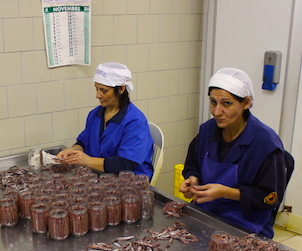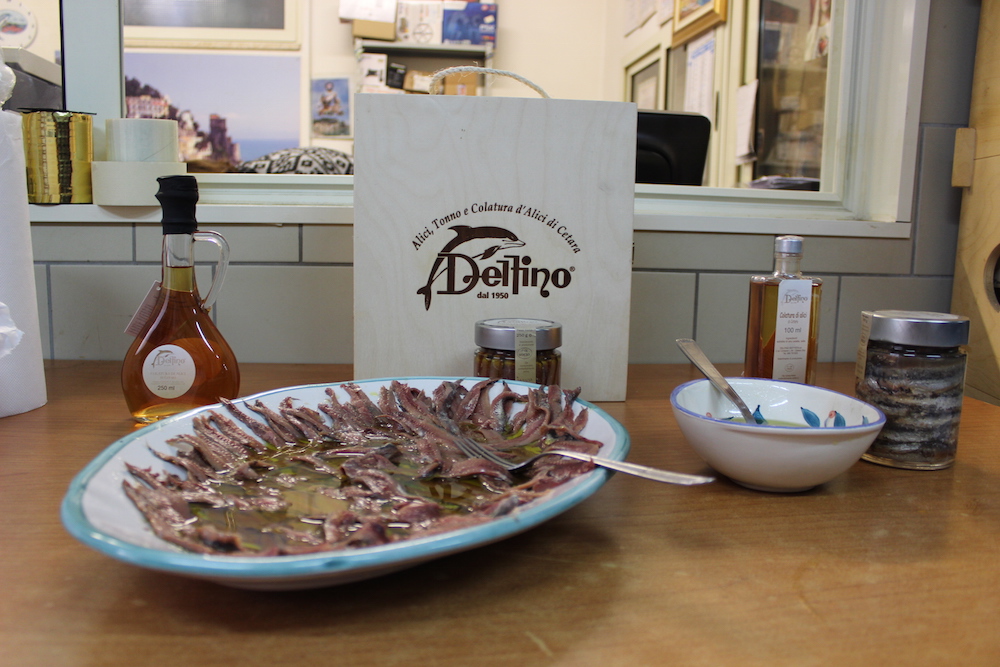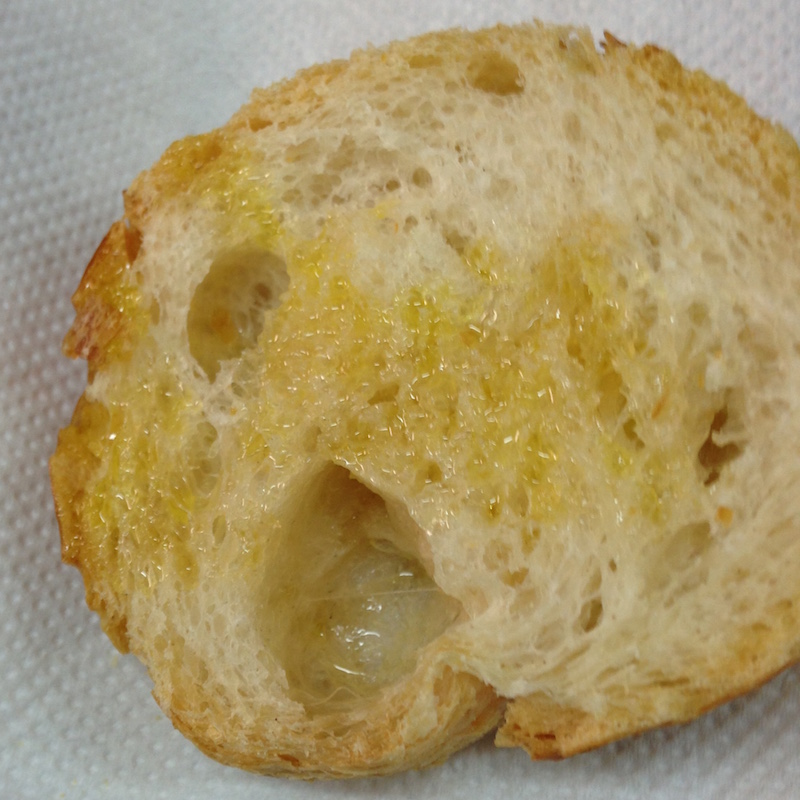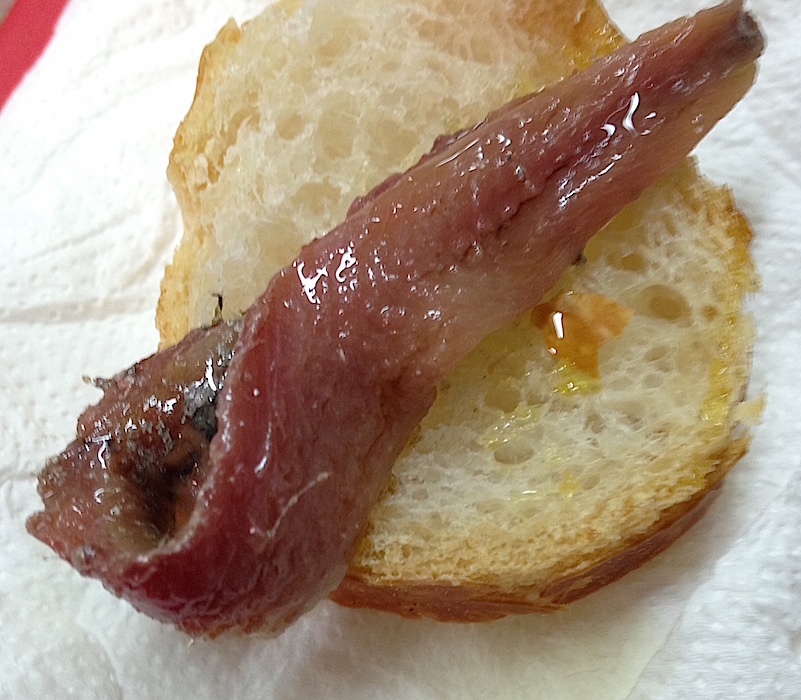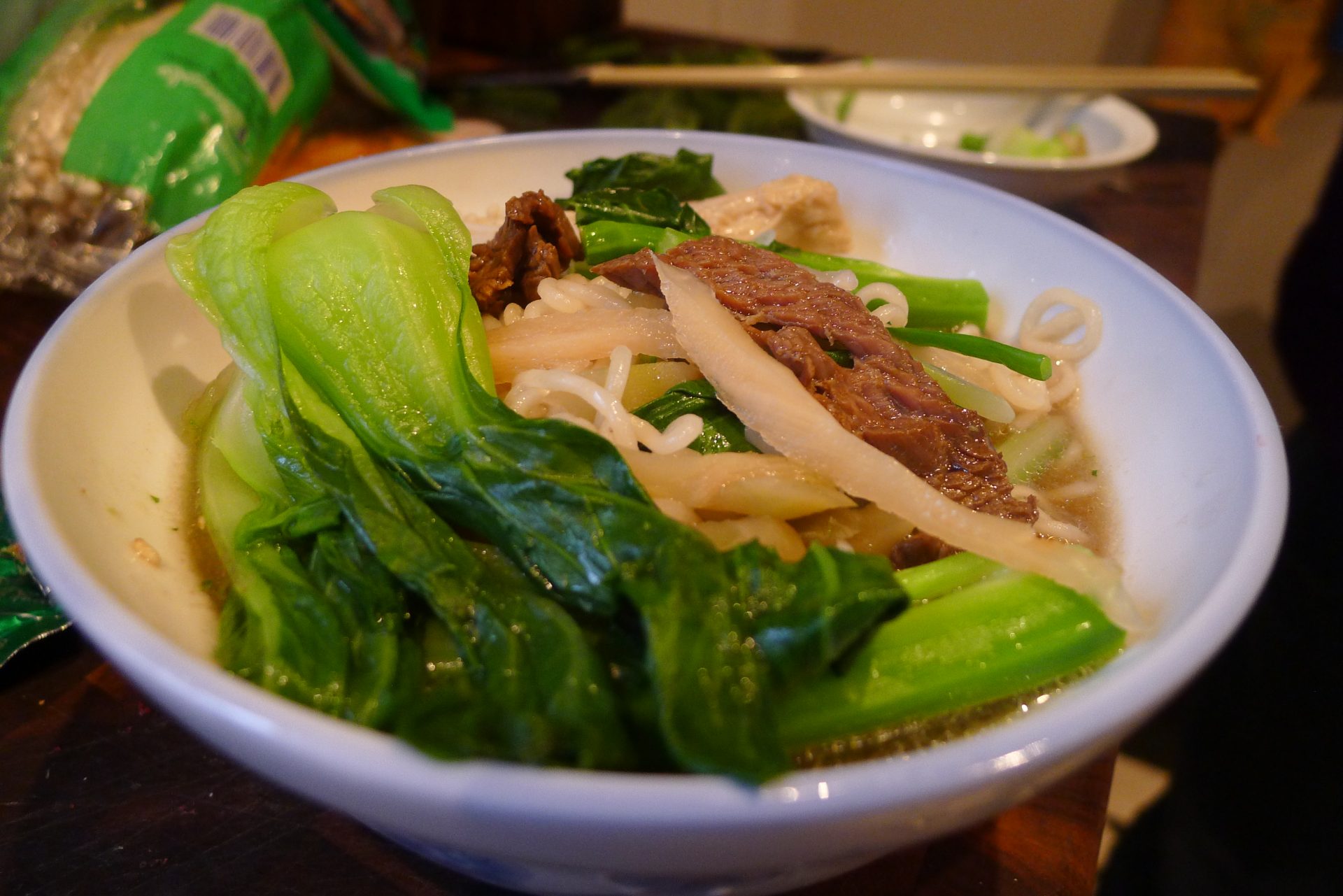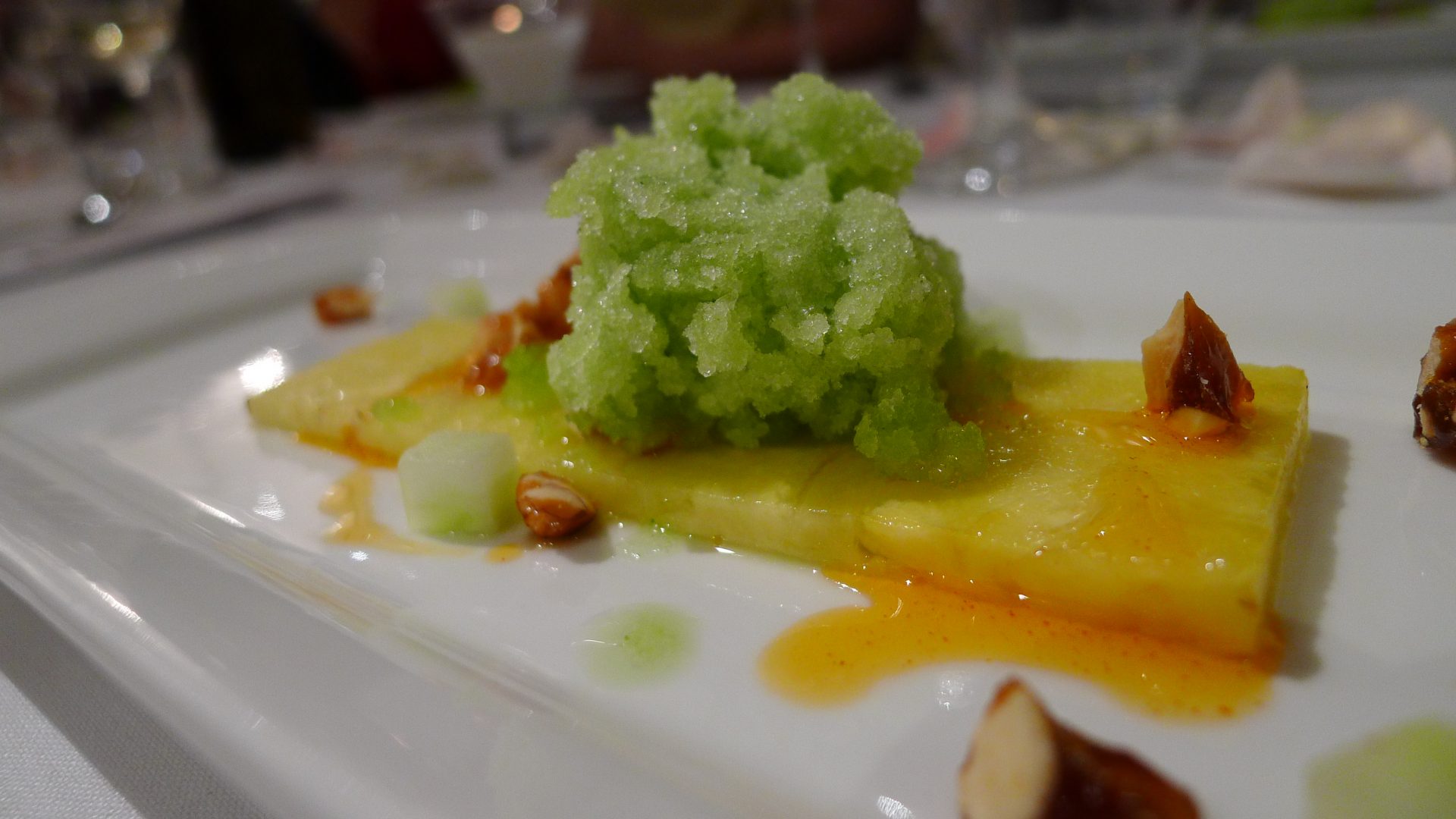
Cured anchovies are hand packed into jars at Delfino Battista in Cetara on the Amalfi Coast of Southern Italy.
The laws of supply and demand are as prevalent in gastronomy than in any other human endeavour, and ubiquity invariably leads to discount. So, not much consideration is given (or was by me) to the humble anchovy, a small fillet packed in cans or jars, brought out occasionally in small amounts as a kind of seasoning: lending a slightly fishy, very salty umami to a salad dressing or marinade for a leg of lamb. Not much until I tasted a fillet plucked from a jar among the boxes and labels of the storeroom at Delfino Battista. That anchovy, preserved in salt and packed in local extra virgin olive oil, was a game changer. It chewed like a prize piece of sashimi, supple and firm. It hit first with a sharp attack of metallic salinity, then melted into a meaty and earthy umami hum. It wasn’t fishy, and yet it was the most perfect embodiment of fishiness at the same time. It was confusing, contradictory and contained multitudes. And it was good.
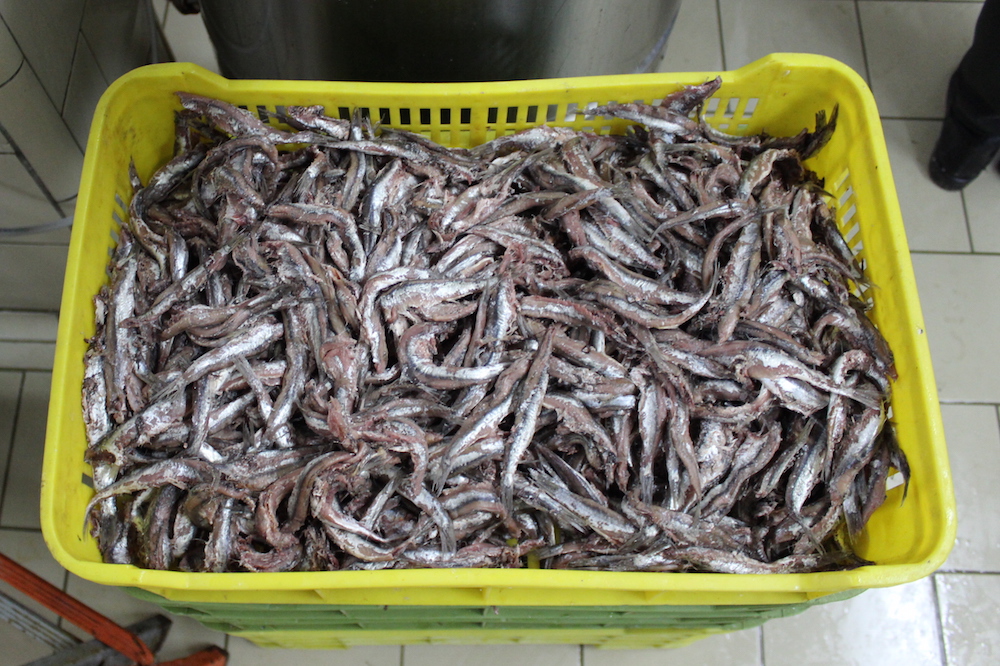
Alici (anchovies) are simply preserved in salt before being packed into jars and topped with olive oil at Delfino Battista in Cetara.
As epiphanies go, the realization that one might just have had the world’s best tasting anchovy on a grey, drizzly morning on the Amalfi Coast has at least the advantage of being relatively unique. The Anchovy Epiphany (as it will be heretofore known) has the additonal remarkable characteristic of being a bit of an accident. It only happened because I was brought to Delfino Battista to try a different product: colatura di alici di Cetara.
Colatura is the modern equivalent of what the Roman’s called garum, and apparently were quite fond of. It’s fish sauce: anchovies are beheaded, left to ferment in salt for 24 hours, then packed into barrels for a few months, and the “juice” from this process, which runs out of a little hole drilled into the bottom of the barrel, is the sauce. Delfino Battista (which is named after the local dolphins and the surname of the founding family) is actually mostly famous for making the sauce, and that’s the group of Canadian journalists, of which I was a part, were led there by our hosts in Italy from the government agency that promotes Italian food exports.
Unlike many Vietnamese fish sauced, the colutura did not have a pronounced nose of sileage (or vomit). It smelled like, well, anchovies. It was extremely salty, and then followed the flavour profile of the alici ,when I tried some on a piece of bread. I was glad for a small glass of Franciacorta offered with the colatura sample that morning. Combined with the refreshing lemony notes of the sparkling wine, saltiness of the sauce was cut and one was left with the pleasant sense of umami.
Colatura is a recognized staple of Neapolitan cuisine, but as a sort of chefs’ secret ingredient added to a dish made with pasta from Gragnano. This makes sense, especially in the region’s warm climate where keeping a jar of anchovy fillets from going off would have been a risky proposition in the ages before refrigeration. The anchovy season in Amalfi is short, from March to July. But, compared to the silky flesh of the actual alici, I’ll take the substance over the essence if I can. Served simply as an appetizer (with an aperitif, of course) on a slice of bread.
Delfino Battista does not currently export to Canada. (Apparently there was an incident involving an absent minded importer who left a shipment in his car over a weekend in winter in Montreal, which turned the management against the alimentari of our fair Dominion… but this could change.) So, I am trying my luck with small producers from the South of Italy who also hand pack their alici in glass jars. When I find a jar that’s comprable, I’ll report back.
 Malcolm Jolley is a founding editor of Good Food Revolution and Executive Director of Good Food Media, the company that publishes it. Follow him on
Malcolm Jolley is a founding editor of Good Food Revolution and Executive Director of Good Food Media, the company that publishes it. Follow him on

